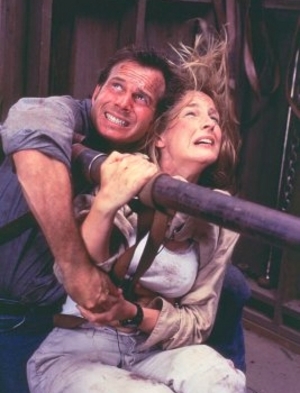Parity. NFL fans across the country have been told over and over that parity exists in the NFL. Fans like myself rally around the idea that this year could be THE year, and “we” definitely have a chance. Even today, Seattle Seahawks fans still believe their beloved team is a contender, even if signs point to things possibly slipping away. The truth is, half the teams in the NFL are terrible, ten teams are ok, and five are good. As a friend of mine said to me recently, “Widespread mediocrity in the NFL is what keeps all of us believing that this year can be ‘our year.’” While football is near and dear to my heart, it has become increasingly more difficult to be a fan of my team. Maybe this is why I have leaned so heavily on my love of mixed martial arts over the last decade.
If an MMA fighter is mediocre at the highest levels of the sport, his or her time there will not only be short, it will be painful. In the early days of MMA, a fighter with a great wrestling background and below average striking could be just as dangerous as a fighter with a dozen kickboxing titles. However, as the sport has progressed, the total summation of fighting skills required to be one of the best in the world seems to have increased, and the great fighters of years past have slowly faded away. Today’s fighters have spent most of their lives learning to be multi-disciplined and this has presented a more even playing field. Beyond that it has exposed those who would otherwise hover in the middle of the pack. This new breed of fighter has done as much for parity as it has for legacy. The modern day MMA champion is dominant. When we look at the UFC, we see dominant champions like Jose Aldo, Demetrious Johnson, Ronda Rousey, and Jon Jones (prior to being stripped of his title), who are some of the most dangerous fighters the sport has ever known. These fighters have been fixed atop their posts and have taken on challengers who are incredibly well prepared and determined to work past the middling fighters who are on the verge of being cut.
While the best fighters have risen to the top and stayed there, it would seem that fighters across the sport have continued to play leapfrog in the rankings and jockey for position as they try to take gold away from the elite of the sport. This is where parity is more relevant. It can take a great deal of time for a fighter to get the call from a top organization like the UFC. Many up and coming fighters come to the UFC with eight or better fights under their belt and usually these fighters are the best from their local region. In some cases these fighters barely have a foot in the door before they are released. If these fighters fail to show great potential in the cage they won’t spend years on the roster, they will be sent packing with the option to get better or get out of the game. It’s the harsh reality of the business but it creates parity that is unmatched in any other professional sport.
The sense of loyalty that comes from being a life-long fan of a team can never be replicated. That familial connection one can have with a team is unique, obsessive, and amazing. However, this connection is just as gut wrenching as it is incredible. Should you suffer year after year if a guy like Tom Brady doesn’t pilot your team? Of course not. So rather than buy into the lie that parity is alive and well in the NFL maybe tune into the next UFC event and find out what parity looks like, fist to fist.
Add The Sports Daily to your Google News Feed!
